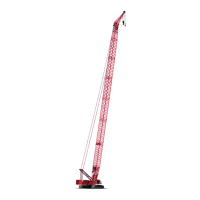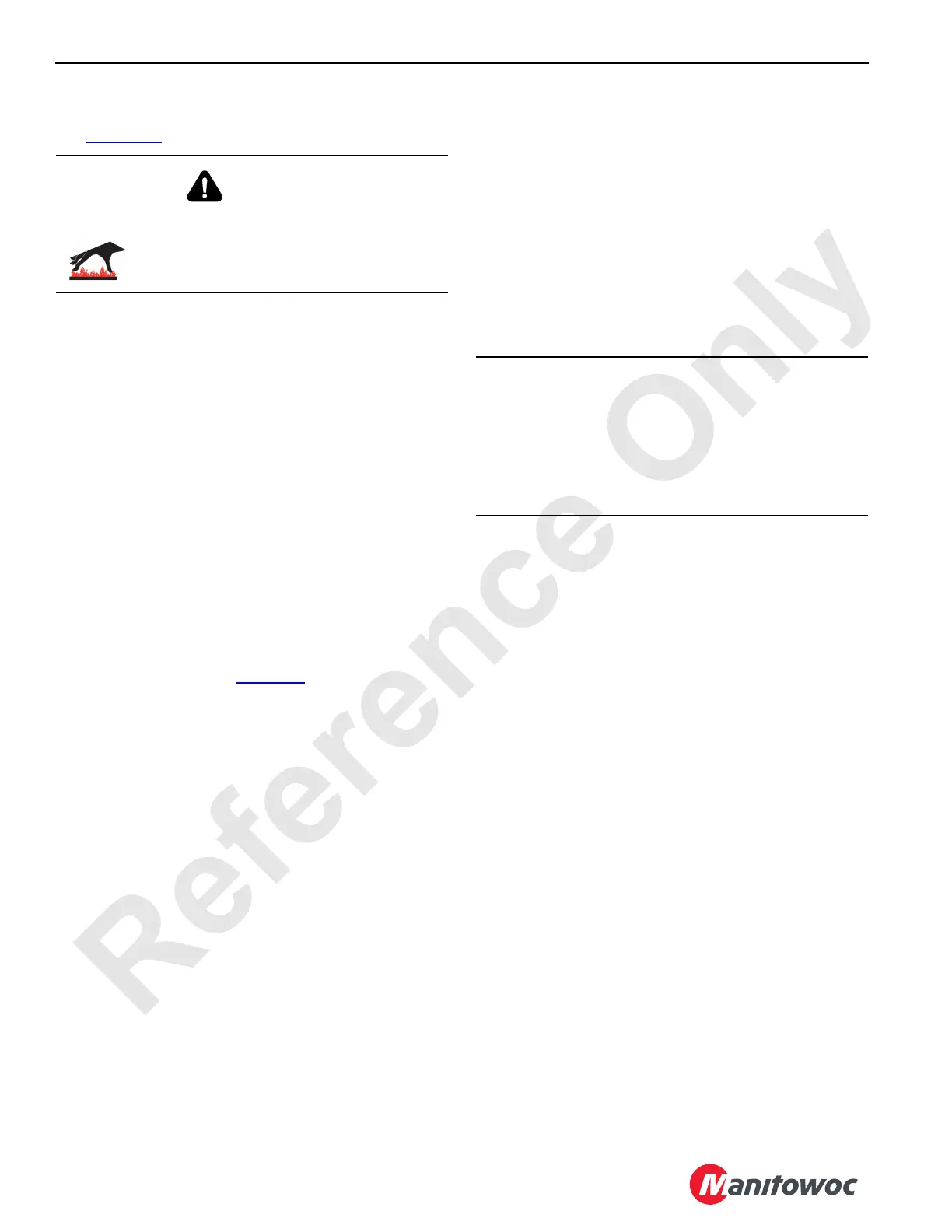POWER TRAIN 16000 SERVICE/MAINTENANCE MANUAL
7-16
Published 05-03-17, Control # 228-03
EXHAUST AFTER TREATMENT SYSTEM
See Figure 7-12 for the following procedures.
The engine exhaust is treated to significantly reduce the
amount of harmful by-products of combustion from contami-
nating breathable air.
Starting at the engine, the primary components of the
exhaust after treatment system include the following:
• Diesel Particulate Filter (DPF) / Diesel Oxidation
Catalyst (DOC) module
• DRT Module with DEF dosing module
• Selective Catalytic Reduction (SCR) module
Also, a Diesel Exhaust Fluid (DEF) dosing system supplies
DEF to the DRT module.
DPF/DOC Module
The Diesel Particulate Filter (DPF) (9) portion of this module
captures soot and ash from the engine exhaust. Periodically
the module will undergo an automatic cleaning process, or
“regeneration.” For more information, see DPF/DOC Module
Operation and Service on page 7-20
and Section 3 of the
Operator Manual.
The DOC module oxidizes remaining hydrocarbons in the
exhaust to carbon dioxide.
The DPF/DOC must be periodically removed and replaced.
See DPF/DOC Module Replacement.
DRT Module
Between the DPF/DOC and the SCR is the Decomposition
Reactor Tube (DRT) (7). The DEF dosing valve is mounted
to the DRT.
The DEF dosing module (8) is also mounted on the DRT. The
dosing module injects Diesel Exhaust Fluid (DEF), a liquid
mixture of urea and water, into the exhaust stream toward
the SCR inlet. Coolant lines run through the dosing module
to keep it cool and operable. The tube contains a mixer to
help DEF mists distribute evenly in the exhaust stream prior
to entering the SCR.
The DRT module requires no maintenance.
SCR Module
The primary function of the Selective Catalytic Reduction
(SCR) module (6) is to reduce NO
x
content to nitrogen. The
Diesel Exhaust Fluid injected at the DRT module enters the
SCR, where the urea and de-ionized water participate in a
chemical reaction that results in the desired exhaust
emission composition.
The SCR incorporates a catalyst, two temperature sensors,
an ammonia (NH
3
) sensor, and a NO
x
sensor.
There is no maintenance requirement for the SCR module.
Excessive NO
x
Warning System
If an excessive NO
x
warning is issued, check anything that
might cause an elevated NO
x
level, including the following:
• Disconnected tank level or quality sensor
• Blocked DEF hose or dosing module
• Disconnected dosing module
• Disconnected supply module
• Disconnected SCR wiring harness
• Disconnected NO
x
sensor
• EGR valve malfunction
After Treatment Protection System
The Cummins After Treatment Protection System (APS)
continually monitors exhaust gas temperatures. In the event
of excessive exhaust temperatures, the APS will illuminate
the High Exhaust System Temperature (HEST) lamp.
WARNING
Hot Exhaust Surfaces and Inhalation Hazards!
Extremely hot surfaces and exhaust gases can
cause death or serious injury. Allow the engine
and exhaust system to cool before servicing.
CAUTION
Loss of Power or Engine Shutdown Hazard
If NO
x
emissions exceed legislated limits, warning lights
and audible warnings will alert the operator. If the
condition is not corrected in a timely manner, an engine
derate and shutdown sequence will begin. For more infor-
mation, refer to Section 3 of the 16000 Operator Manual.

